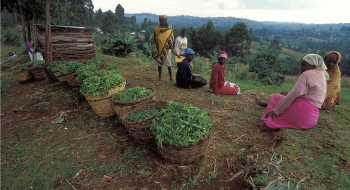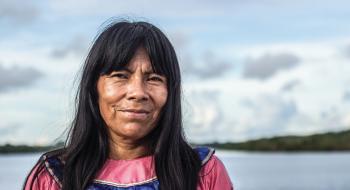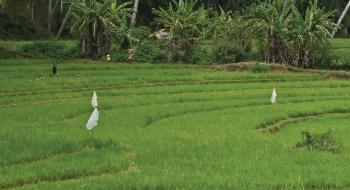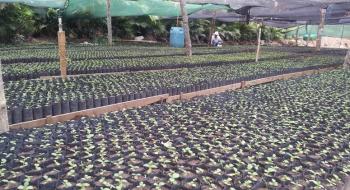Location
The Global Partnership on Forest and Landscape Restoration (GPFLR) is a proactive global network that unites governments, organizations, academic/research institutes, communities and individuals under a common goal: to restore the world’s lost and degraded forests and their surrounding landscapes.
Specifically, the GPFLR responds directly to the Bonn Challenge to restore 150 million hectares of deforested and degraded land by 2020 and 350 million hectares by 2030.
The GPFLR was initiated in 2003 by a small consortium of like-minded organizations and spearheaded by IUCN. Its purpose is to catalyze dynamic, voluntary action through sharing diverse experiences on restoration efforts which deliver tangible benefits to both local communities and nature through a landscape approach, while also fulfilling international commitments on forests.
The GPFLR does this by:
Catalyzing support
Members of the partnership work together to build support for forest and landscape restoration (FLR) at all levels. This includes building awareness and securing the interest of decision-makers and opinion-shapers from government, the private sector, civil society, the media and others. It also involves promoting increased support for FLR in international, regional and national policy frameworks.
Creating knowledge networks to accelerate restoration effort
As practitioners of FLR, we are learning all the time, through experience and from each other. The GPFLR Learning Network provides an important vehicle for that process. Our aim is to raise awareness of real world FLR experiences and make available the tools and knowledge to support practitioners in the field. By connecting our partners and collaborators around the world in an FLR community of practice we are able to spread best practices, build cooperation and exchange new ideas and solutions, saving both time and resources.
Capacity development
Courses and workshops are essential to developing individual and collective capacity with respect to the conservation and restoration of forest landscapes. Our partners organize multiple and varied courses and learning opportunities related to FLR all over the world and online.
We believe that ideas transform landscapes
Through active engagement, collaboration and the sharing of ideas and information, GPFLR promotes an integrated, cross-sectoral approach to restoration that seeks to ensure that forests and the functions and values they represent are effectively re-established, conserved and used to enable sustainable livelihoods and ecological integrity for the future.
The GPFLR does not seek to establish a parallel policy process or duplicate the efforts of others, but rather pursues and creates positive synergies between existing activities, projects, processes and institutions to encourage and reinforce the contribution of each.
Members:
Resources
Displaying 6 - 10 of 23World Bank: Restoring Landscapes and Resilience in Burundi
Burundi’s economy is dominated by small-scale agriculture practiced on the slopes of hills and mountains. The burgeoning population and an overwhelming reliance on natural resources by 90 percent of the population have both caused aggravated environmental degradation. The recent World Bank Country Environment Analysis estimates that each year, almost 38 million tons of soil is lost and land degradation cost 4% of the country’s GDP. Soil erosion worsens Burundi’s socioeconomic situation, and particularly affects the poorest.
World Bank: Central America Dryland Corridor - Resilient Landscapes Management Project in Nicaragua
This project aims to strengthen the National Protected Areas System and to support sustainable land use and restoration practices in selected areas of the Dry Corridor of Nicaragua, in order to foster biodiversity conservation, resilient landscapes, and local livelihoods.
World Bank: India Ecosystem Services Improvement Project
The objective of the India Ecosystem Services Project (ESIP), which is under preparation, is to improve forest quality, land management, and nontimber forest produce (NTFP) benefits for forest dependent communities in selected landscapes in Madhya Pradesh and Chhattisgarh. It is designed to enhance the outcomes of the national Green India Mission, which targets improving the quality of forests in about 5 million hectares.
From restoring degraded lands to enhancing farmers’ nutrition and income in Guatemala
Farmers in poor rural areas of Guatemala are learning how agroforestry incorporating the culturally important breadnut tree can boost their nutrition and income as well as restoring degraded land through deforestation*.
In a pilot project, the Food and Agriculture Organization of the United Nations assisted 38 smallholder families in Petén, the northernmost department of Guatemala, to become “restoration farmers.” Their plots will serve as demonstration sites for efforts to scale up the initiative to the regional level.
One hectare at a time: restoration of a model forest in Costa Rica
After a quarter-century of restoration in a heavily degraded river basin in Costa Rica, a “model forest” platform is helping a local foundation to promote the benefits of its work and boost business in an economically depressed region.*
The area surrounding the headwaters of the Nosara River, which flows from the highlands of the Nicoya Peninsula into the Pacific Ocean, suffered deforestation under a past government policy that encouraged large-scale land clearing for agriculture and cattle ranching.






